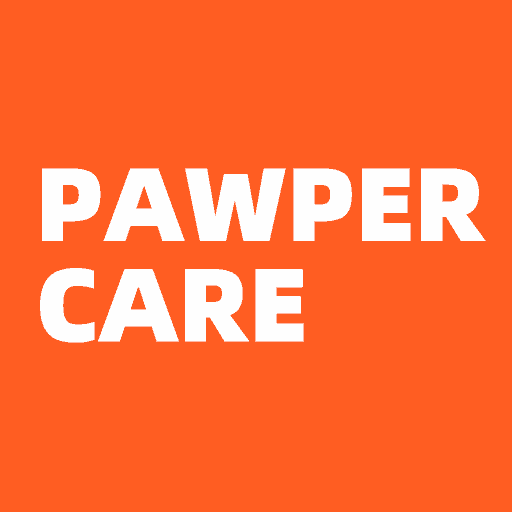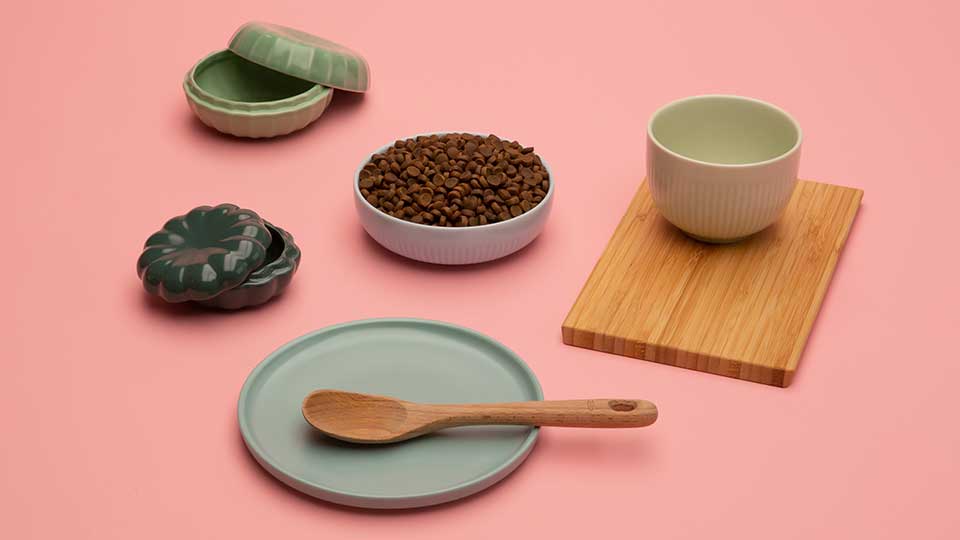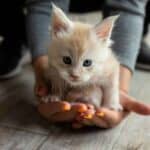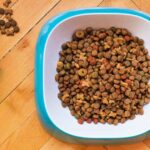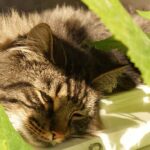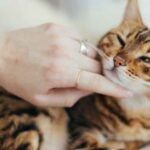If you have an indoor cat, you might wonder what kind of dry cat food is best for them.
Indoor cats have different nutritional needs than outdoor cats, as they tend to be less active and more prone to weight gain, hairballs, and urinary issues.
Therefore, a good diet for them is high in protein, low in calories, and rich in fiber and moisture.
Therefore, choosing the best dry cat food for indoor cats is essential to keep them healthy and happy.
In this post, we will cover as many aspects of dry cat food as possible.
Let’s see our top picks first!
Contents
ToggleOur Top Picks
Best Overall: Purina Beyond Grain Free Dry Cat Food
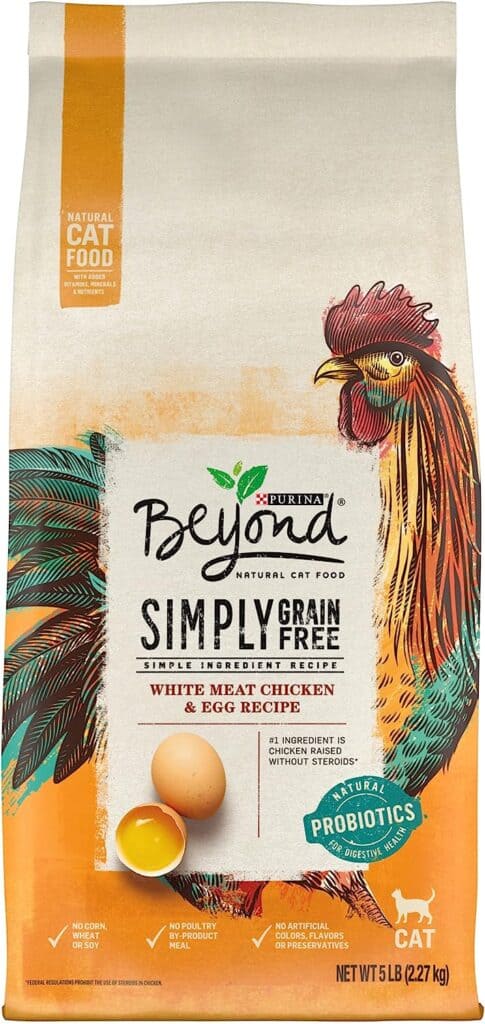
- Life Stage: Adult
- Top ingredients: Chicken, chicken meal, whole barley, rice, whole oat meal
- Special diet: Grain-free, gluten-free, no corn, wheat or soy
- Food Flavor: Chicken
- Calorie count: 430 kcal/cup
- It is made with real chicken as the first ingredient and natural ingredients plus essential nutrients.
- It is formulated to meet the nutritional levels established by the AAFCO Cat Food Nutrient Profiles for maintenance of adult cats.
- It has no artificial colors, flavors or preservatives.
- High in protein and low in carbohydrates
- Suitable for cats with grain or gluten sensitivities
- Pricy
Best for Sensitive Stomach: Purina ONE Dry Cat Food
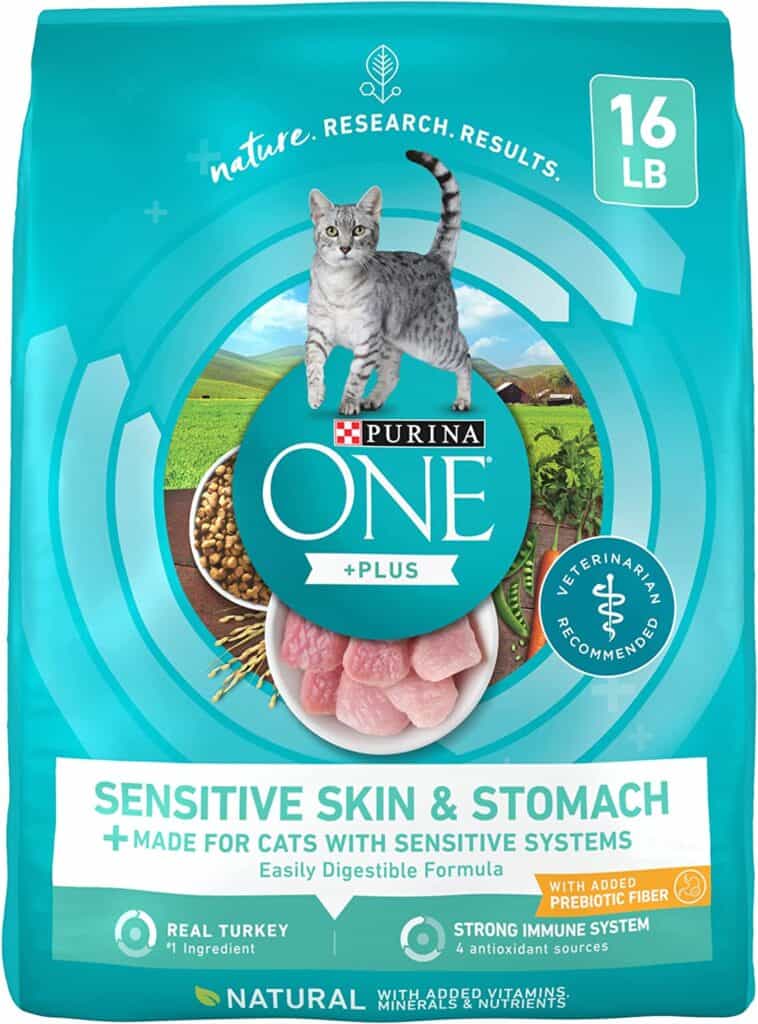
- Life Stage: Adult
- Top ingredients: Turkey, brewers rice, corn gluten meal, soybean meal, turkey by-product meal
- Special diet: None
- Food Flavor: Turkey
- Calorie count: 430 kcal/cup
- It is made with real turkey as the first ingredient and natural ingredients plus vitamins and minerals
- It is formulated to support healthy digestion and skin
- It has omega-6 fatty acids and zinc to nourish the skin and coat
- High in protein and low in fat
- Suitable for cats with sensitive stomachs or skin
- Contains grains, gluten, soy and by-products that some cats may be allergic or sensitive to
- May not be suitable for cats with turkey allergies or sensitivities
Best for Hairball Control: IAMS PROACTIVE HEALTH Dry cat Food
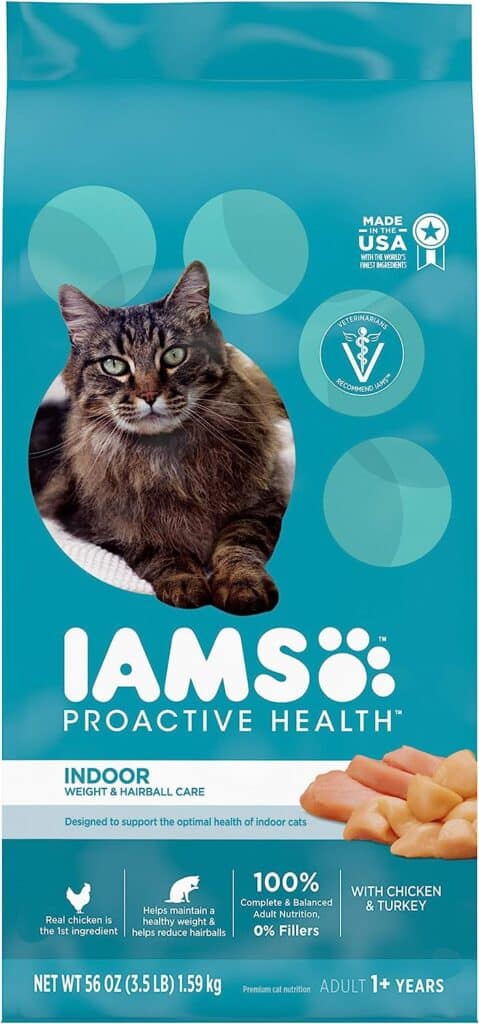
- Life Stage: Adult
- Top ingredients: Chicken, chicken meal, whole barley, rice, whole oat meal
- Special diet: Grain-free, gluten-free, no corn, wheat or soy
- Food Flavor: Chicken and Turkey
- Calorie count: 430 kcal/cup
- It helps reduce hairballs before they start with a tailored proprietary fiber blend including beet pulp.
- It is formulated to help support strong muscles and provide your cat with healthy energy to play.
- It nourishes your cat with the optimal Omega-6 to Omega-3 fatty acid ratio for soft, shiny, healthy coats
- It helps burn fat and maintain healthy metabolism with L-carnitine.
- It provides your cat with a high quality protein meal that satisfies with 10% less fat than IAMS Healthy Adult Original with Chicken.
- High in protein and low in carbohydrates
- Suitable for cats with grain or gluten sensitivities
- Pricy
Best for kittens: Hill's Science Diet Dry Cat Food
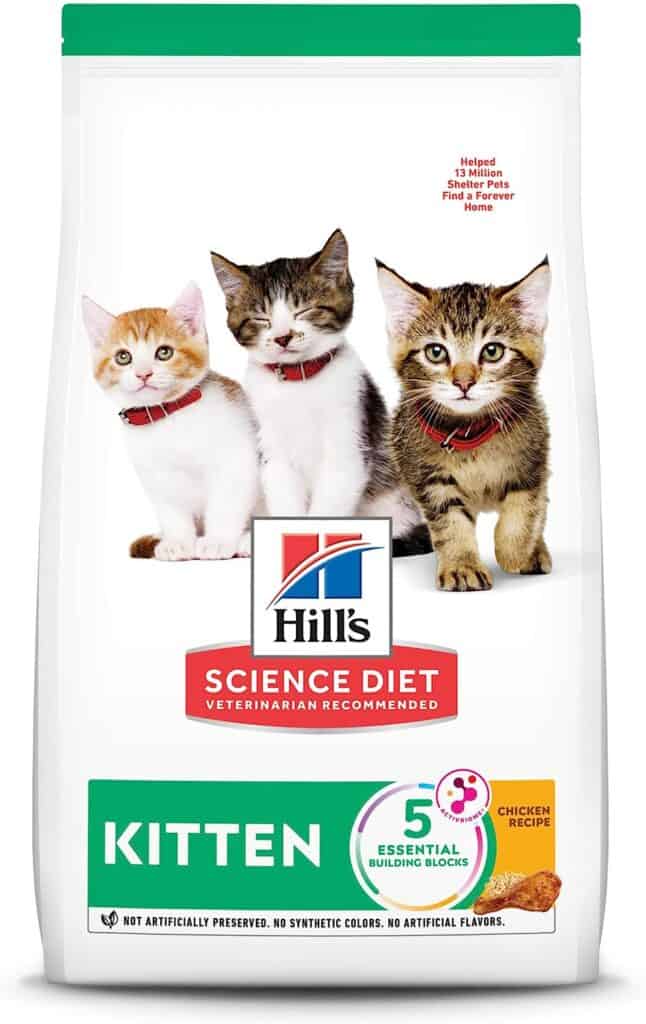
- Life Stage: Kitten
- Top ingredients: Chicken, whole grain wheat, corn gluten meal, chicken fat, whole grain corn
- Special diet: None
- Food Flavor: Chicken
- Calorie count: 552 kcal/cup
- It is made with natural ingredients plus vitamins, minerals and amino acids.
- It supports healthy brain and eye development with DHA from fish oil.
- It provides high-quality protein to help young cats build lean muscles
- It promotes healthy digestion with natural fibers.
- It supports a healthy immune system with antioxidants.
- Veterinarians recommend it and has a 100% satisfaction guarantee
- Contains grains, gluten and corn that some cats may be allergic or sensitive to
Best for Weight Loss: Blue Buffalo Dry Cat Food

- Life Stage: Adult
- Top ingredients: Chicken, chicken meal, whole barley, rice, whole oat meal
- Special diet: Grain-free, gluten-free, no corn, wheat or soy
- Food Flavor: Chicken
- Calorie count: 430 kcal/cup
- It is formulated for weight control with carefully balanced calories to help your cat achieve and maintain a healthy weight
- It contains BLUE’s exclusive LifeSource Bits, which are a precise blend of antioxidants, vitamins, and minerals to support immune system health.
- It has no artificial colors, flavors or preservatives.
- High in protein and low in carbohydrates
- Suitable for cats with grain or gluten sensitivities
- Pricy
Best Care for your maine coon
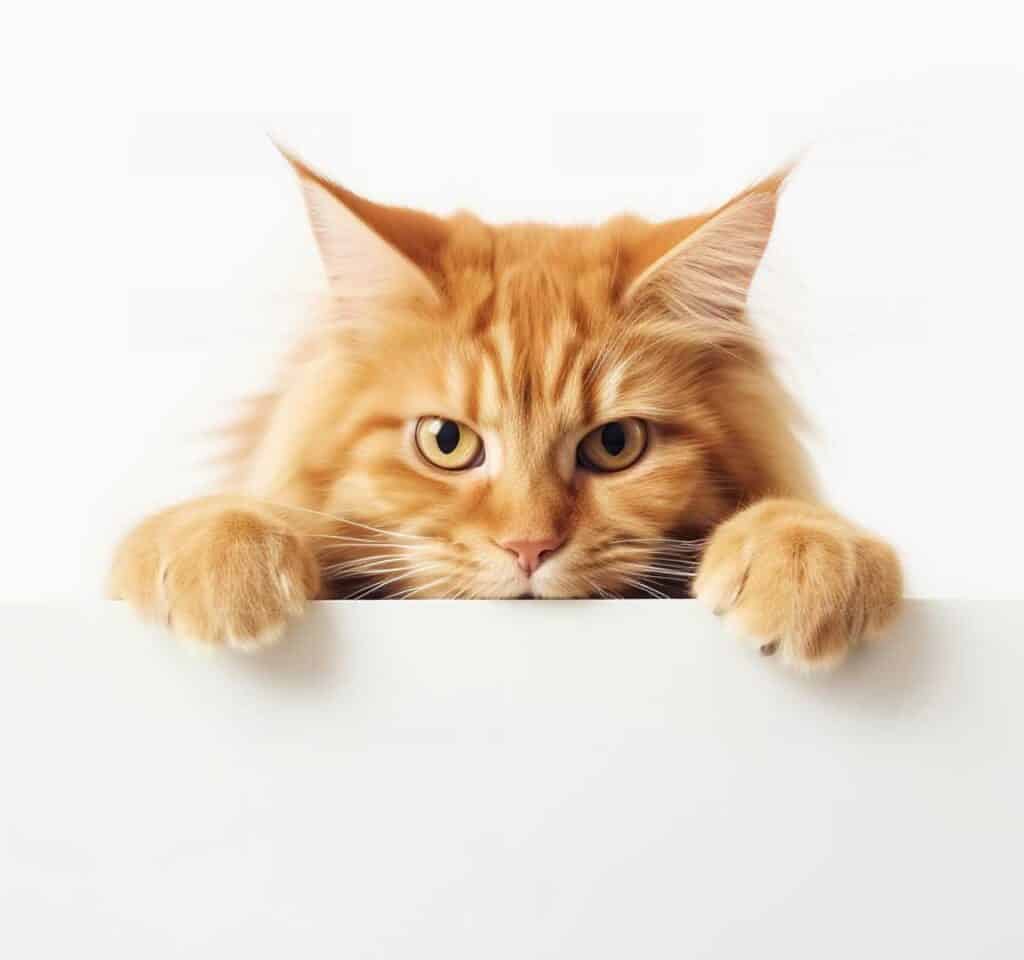
What Nutrition Do Indoor Cats Need?
My friend David keeps his Maine Coon in his apartment all day and worries about lacking certain nutrients.
So, what kind of nutrition does an indoor cat need?
Cats are obligate carnivores, which means they need animal protein to survive and thrive.
Protein provides essential amino acids, such as taurine, that cats cannot synthesize on their own.
Protein also helps maintain muscle mass, skin health, fur quality, immune function, and energy levels.
According to the Cornell Feline Health Center, cats’ meals should meet these basic requirements for protein, fat, and carbohydrates:
Nutrient Requirement
- Protein: At least 26% of dry matter
- Fat: At least 9% of dry matter
- Carbohydrates: No more than 25% of dry matter
In addition to these macronutrients, cats also need micronutrients, such as vitamins, minerals, antioxidants, and omega-3 fatty acids.
These nutrients support various aspects of cat health, such as vision, heart function, brain development, joint health, and inflammation.
What is The Healthiest Diet for An Indoor Cat?
The healthiest diet for an indoor cat meets their nutritional needs, suits their preferences and lifestyle, and prevents or manages any health issues they may have.
Some factors to consider when choosing a diet for an indoor cat are:
- Age: Kittens, adult cats and senior cats have different nutritional needs and calorie requirements. For example, kittens need more protein and fat for growth, while senior cats may need less calories and more fiber to prevent obesity and constipation.
- Activity level: Indoor cats tend to be less active than outdoor cats, which means they burn fewer calories and may be more prone to weight gain. Therefore, indoor cats may benefit from a diet that is lower in calories and higher in fiber to keep them full and satisfied.
- Hairball control: Indoor cats spend more time grooming themselves than outdoor cats, which means they ingest more hair that can form hairballs in their digestive tract. To help prevent hairballs, indoor cats may need a diet that contains natural fiber sources, such as psyllium or beet pulp, that can help move hair through the system.
- Hydration: Indoor cats may not drink enough water, especially if they only eat dry food. This can lead to dehydration and urinary tract problems. To increase water intake, indoor cats may need a diet that contains some wet food or added water or broth to their dry food. Alternatively, providing fresh water in multiple bowls or fountains around the house can encourage drinking.
Dry Food VS. Wet Food? Is Dry Food Healthier?
Dry food and wet food both have advantages and disadvantages for indoor cats.
The best option may depend on the individual cat’s needs and preferences.
Dry food is more convenient, economical and shelf-stable than wet food.
It can also help clean the teeth and reduce tartar buildup.
However, dry food is also higher in carbohydrates and lower in moisture than wet food.
This can contribute to obesity, diabetes and urinary tract issues in some cats.
Wet food is more palatable, digestible and hydrating than dry food.
It can also help prevent hairballs by lubricating the digestive tract.
However, wet food is also more expensive, perishable and messy than dry food.
It can also cause dental problems if not supplemented with dental care.
A balanced diet for an indoor cat may include both dry and wet food, depending on their needs and preferences.
Some experts recommend feeding at least 50% of the daily calories from wet food.
Alternatively, adding water or broth to dry food can increase moisture intake.
What Ingredients Should You Look for in Dry Cat Food?
When choosing a dry cat food for indoor cats, it is important to read the ingredient list and look for the following features:
- A named animal protein source as the first ingredient: This indicates that the food contains high-quality protein that provides essential amino acids for cats. Examples of named animal protein sources are chicken, turkey, lamb, salmon, etc. Avoid generic terms like “meat” or “poultry”, which may come from unspecified or low-quality sources.
- A named animal fat source: This indicates that the food contains healthy fats that provide energy and omega-3 fatty acids for cats. Examples of named animal fat sources are chicken fat, salmon oil, sunflower oil, etc. Avoid generic terms like “animal fat” or “poultry fat”, which may come from unspecified or low-quality sources.
- A low-carbohydrate content: This indicates that the food does not contain excessive fillers that can cause obesity, diabetes and allergies in cats. Examples of low-carbohydrate ingredients are green peas, sweet potatoes, potato starch, etc. Avoid grains, such as corn, wheat or soy, which are high in carbohydrates and may trigger food sensitivities in some cats.
- A natural fiber source: This indicates that the food contains ingredients that can help prevent hairballs and promote digestive health in cats. Examples of natural fiber sources are psyllium, beet pulp, cellulose, etc. Avoid artificial or synthetic fibers, such as propylene glycol or guar gum, which may cause gastrointestinal upset in some cats.
- A vitamin and mineral supplement: This indicates that the food contains added nutrients that can balance the diet and support cat health. Examples of vitamins and minerals are vitamin C, vitamin E, calcium, iron, zinc, etc. Look for natural or organic sources of vitamins and minerals, rather than synthetic ones.
- Taurine: This is an essential amino acid for cats that can prevent eye and heart problems. It is naturally found in animal tissues, but may be destroyed by cooking or processing. Therefore, look for dry cat food that contains added taurine to ensure adequate intake.
What Cat Foods Do Vets Recommend?
There is no one-size-fits-all answer to this question, as different cats may have different dietary needs and preferences.
However, some general guidelines to follow when choosing a dry cat food for indoor cats are:
- Cat food with an AAFCO nutritional adequacy statement on the label, the food meets the minimum standards for cat nutrition established by the Association of American Feed Control Officials (AAFCO), a regulatory body for pet food.
- Cat food that is formulated for indoor cats or all life stages: the food is tailored to the specific needs of indoor cats or suitable for cats of any age.
- Cat food that has a high protein content (at least 26% of dry weight), a moderate fat content (at least 9% of dry weight), and a low carbohydrate content (no more than 25% of dry weight).
- Cat food that has a natural fiber source (such as psyllium or beet pulp) helps prevent hairballs and promote digestive health.
- Cat food with added vitamins, minerals and taurine balances the diet and supports cat health.
- Cat food has a named animal protein source as the first ingredient and a named animal fat source as the second or third ingredient.
- Cat food that does not contain grains (such as corn, wheat or soy), artificial colors, flavors or preservatives.
How Much Dry Cat Food Should You Feed A Cat?
The amount of dry cat food you should feed your indoor cat depends on several factors, such as their age, weight, activity level and health status.
The best way to determine how much to feed your cat is to consult your veterinarian, who can assess your cat’s body condition score and recommend an appropriate feeding plan.
As a general rule of thumb, you can use the feeding guidelines on the cat food label as a starting point and adjust according to your cat’s needs.
The guidelines usually indicate how much to feed per day based on your cat’s weight.
For example, if your cat weighs 10 pounds and the label says to feed 1/2 cup per day for a 10-pound cat, you can divide that amount into two or three meals throughout the day.
However, keep in mind that these guidelines are only estimates and may not suit every cat.
Some factors that may affect how much to feed your cat are:
- The calorie content of the food: Different foods have different calorie densities, which means they provide different amounts of energy per unit of weight. For example, dry foods tend to have more calories per cup than wet foods. Therefore, you may need to feed less of a high-calorie food than a low-calorie food to meet your cat’s energy needs.
- The activity level of your cat: Active cats burn more calories than sedentary cats and may need more food to maintain their weight. Conversely, inactive cats may need less food to prevent obesity. Indoor cats tend to be less active than outdoor cats and may benefit from a lower-calorie diet or increased exercise.
- The health status of your cat: Some health conditions may affect your cat’s appetite, metabolism and nutrient requirements. For example, cats with diabetes may need a low-carbohydrate diet to control their blood sugar levels, while cats with kidney disease may need a low-protein diet to reduce the workload on their kidneys. Always consult your veterinarian before changing your cat’s diet if they have any medical issues.
To monitor how much you are feeding your cat, use a measuring cup or a scale to measure the exact amount of food you are giving.
You can also use a food diary or an app to track your cat’s food intake and compare it with their calorie needs.
To monitor how your cat responds to the amount of food you are feeding, weigh your cat regularly and check their body condition score.
A body condition score is a simple way to assess your cat’s body fat and muscle mass by looking at and feeling their ribs, waist and abdomen.
You can use this chart to determine your cat’s body condition score and ideal weight range.
The goal is to keep your cat at a healthy weight and body condition score, usually between 4 and 5 on a scale of 1 to 9.
If your cat is underweight or overweight, you may need to adjust the food you feed accordingly.
You can also ask your veterinarian for advice on how to help your cat reach their optimal weight.
Frequently Ask Questions
How to Weigh Your Cat?
Weighing your cat regularly is important to monitor their health and detect any changes that may indicate a problem.
However, weighing a cat can be challenging, as they may not cooperate or stay still on the scale.
Here are some tips on how to weigh your cat at home:
- Use a digital scale that is accurate and sensitive enough to measure small weight changes. A baby scale or a kitchen scale can work well for this purpose. Avoid using a human scale, as it may not be precise enough or register your cat’s weight at all.
- Place the scale on a flat, stable surface, such as a table or counter. Make sure the scale is zeroed before you use it.
- If your cat is comfortable with being in a carrier, you can weigh them using the carrier method. This involves weighing the empty carrier first, then weighing the carrier with your cat inside, and subtracting the difference. This way, you can avoid stressing your cat or having them jump off the scale.
- If your cat is not comfortable with being in a carrier, you can weigh them using the towel method. This involves wrapping your cat in a towel or a blanket and holding them on the scale. Make sure you weigh the towel or blanket first and subtract its weight from the total weight.
- Alternatively, you can try placing some treats or toys on the scale and enticing your cat to step on it. This may work better if you use a large platform scale that can accommodate your cat’s size and movement.
- Record your cat’s weight and compare it with their previous measurements. You can use a notebook, a spreadsheet or an app to keep track of your cat’s weight over time.
- Weigh your cat at least once a month or more often if they have any health issues or special dietary needs. Try to consistently weigh them at the same time of day and under the same conditions.
- Consult your veterinarian if you notice any significant or sudden changes in your cat’s weight or body condition score. A body condition score is a way to assess your cat’s body fat and muscle mass by looking at and feeling their ribs, waist and abdomen.
How to Prevent Obesity in Indoor Cats?
Obesity is a common problem among indoor cats, as they tend to be less active and more prone to overeating than outdoor cats.
Obesity can lead to various health issues, such as diabetes, arthritis, urinary tract problems and heart disease.
Therefore, preventing obesity in indoor cats is essential to keep them healthy and happy.
Here are some tips on how to prevent obesity in indoor cats:
- Feed your cat a high-quality, high-protein and low-carbohydrate diet that meets their nutritional needs and suits their preferences. Avoid feeding them too much dry food, as it may contain more calories and less moisture than wet food. Alternatively, add some water or broth to their dry food to increase hydration and reduce calorie intake.
- Follow the feeding guidelines on the cat food label or consult your veterinarian to determine how much food to feed your cat per day based on their age, weight, activity level and health status. Use a measuring cup or a scale to measure the exact amount of food you are giving.
- Divide the daily amount of food into two or three meals throughout the day rather than always leaving food out. This can help control portion size and prevent overeating.
- To encourage drinking, provide fresh water in multiple bowls or fountains around the house. Water can help flush out toxins, prevent urinary tract problems, and hydrate your cat.
- Increase your cat’s physical activity by providing them with toys, scratching posts, climbing trees and interactive games. Play with your cat for at least 15 minutes twice a day to stimulate their natural hunting instincts and burn calories.
- Monitor your cat’s weight and body condition score regularly and adjust their diet and exercise accordingly. Aim to keep your cat at a healthy weight and body condition score, usually between 4 and 5 on a scale of 1 to 9.
Can Dry Cat Food Go Stale?
Dry cat food can go stale if it is not stored properly or used within its shelf life.
Stale dry cat food may lose its flavor, aroma, texture and nutritional value. It may also become contaminated with bacteria, mold or insects that can cause cat illness.
Here are some tips on how to prevent dry cat food from going stale:
- Check the expiration date on the dry cat food package before buying or using it. Do not buy or use dry cat food past its expiration date or with signs of damage, such as tears, holes or dents.
- Store dry cat food in a cool, dry and dark place, away from heat, moisture and sunlight. Heat, moisture and sunlight can degrade the quality and safety of dry cat food and cause it to spoil faster.
- Keep dry cat food in its original package or transfer it to an airtight container. The original package or an airtight container can protect dry cat food from exposure to air, which can cause oxidation and rancidity. Make sure to seal the package or container tightly after each use.
- Use dry cat food within six weeks of opening the package or container. Dry cat food may lose its freshness and potency over time, even if it is stored properly. To avoid wasting dry cat food, buy smaller packages or containers you can use up within six weeks.
- Discard any leftover dry cat food in your cat’s bowl after each meal. Leftover dry cat food may become stale or contaminated by saliva, bacteria or insects. To prevent overfeeding and waste, only give your cat the amount of dry cat food they can eat in one sitting.
How to Transition Your Indoor Cat to A New Food?
Transitioning your indoor cat to a new food can be challenging, as cats are creatures of habit and may resist change.
However, transitioning your indoor cat to a new food may be necessary for various reasons, such as health issues, dietary needs, preferences or availability.
Here are some tips on how to transition your indoor cat to new food:
- Consult your veterinarian before changing your cat’s diet. Your veterinarian can advise you on the best type and amount of food for your cat’s specific needs and conditions. They can also monitor your cat’s health and weight during the transition process.
- Choose a high-quality, high-protein and low-carbohydrate food that is suitable for indoor cats or for all life stages. Avoid foods that contain grains, artificial colors, flavors or preservatives that may cause allergies or digestive problems in cats.
- Introduce the new food gradually over a period of 7 to 10 days. Start by mixing a small amount of the new food with a larger amount of the old food in your cat’s bowl. Gradually increase the proportion of the new food and decrease the proportion of the old food until you are feeding only the new food by the end of the transition period.
- Feed your cat at regular times and in a familiar place. Feeding your cat at regular times and in a familiar place can help them feel more comfortable and secure during the transition process. Avoid changing other aspects of your cat’s routine or environment that may cause stress or anxiety.
- Monitor your cat’s appetite, behavior and stool quality during the transition process. If your cat refuses to eat the new food, acts differently or has diarrhea, vomiting or constipation, consult your veterinarian immediately. These signs may indicate that your cat is not tolerating the new food well or has an underlying health problem.
Is It Better for Cats to Eat Dry Food or Canned Food?
Dry food and canned food both have advantages and disadvantages for cats.
The best option may depend on the individual cat’s needs and preferences.
Dry food is more convenient, economical and shelf-stable than canned food.
It can also help clean the teeth and reduce tartar buildup.
However, dry food is also higher in carbohydrates and lower in moisture than canned food.
This can contribute to obesity, diabetes and urinary tract issues in some cats.
Canned food is more palatable, digestible and hydrating than dry food.
It can also help prevent hairballs by lubricating the digestive tract.
However, canned food is also more expensive, perishable and messy than dry food.
It can also cause dental problems if not supplemented with dental care.
A balanced diet for cats may include both dry and canned food, depending on their needs and preferences.
Some experts recommend feeding at least 50% of the daily calories from canned food.
Alternatively, adding water or broth to dry food can increase moisture intake.
Final Thoughts
Choosing the best dry cat food for indoor cats can be challenging, but not impossible.
By reading the ingredient list, looking for high-quality protein, fat and fiber sources, avoiding grains and artificial additives, and following the feeding guidelines and your veterinarian’s recommendations, you can provide your indoor cat with a nutritious and delicious diet that will keep them healthy and happy for years to come.
Reference
Cornell Feline Health Center. (n.d.). Feeding Your Cat. Retrieved from https://www.vet.cornell.edu/departments-centers-and-institutes/cornell-feline-health-center/health-information/feline-health-topics/feeding-your-cat
Pierson, L. (2018). Feeding Your Cat: Know the Basics of Feline Nutrition. Retrieved from https://catinfo.org/\
World Small Animal Veterinary Association. (2019). Body Condition Score Chart for Cats. Retrieved from https://wsava.org/wp-content/uploads/2020/01/Cat-Body-Condition-Score-Chart.pdf
World Small Animal Veterinary Association. (2019). Body Condition Score Chart for Cats. Retrieved from https://wsava.org/wp-content/uploads/2020/01/Cat-Body-Condition-Score-Chart.pdf
Pierson, L. (2018). Feeding Your Cat: Know the Basics of Feline Nutrition. Retrieved from https://catinfo.org/
